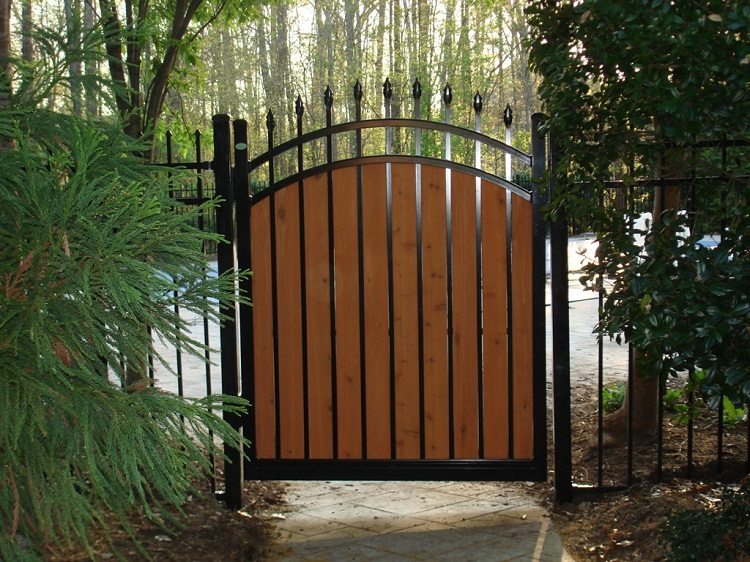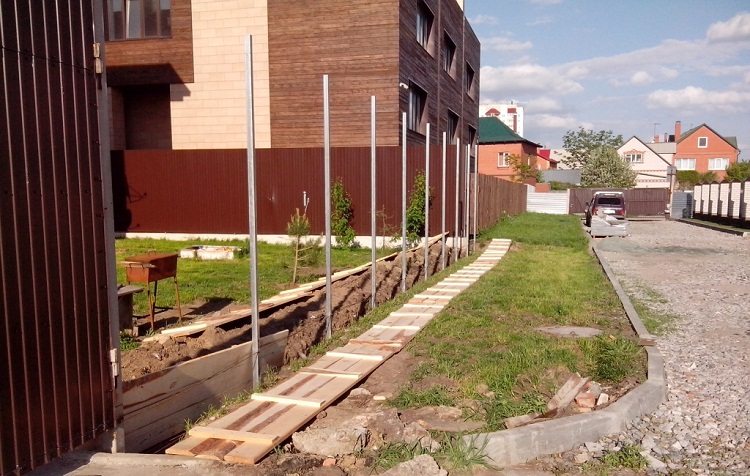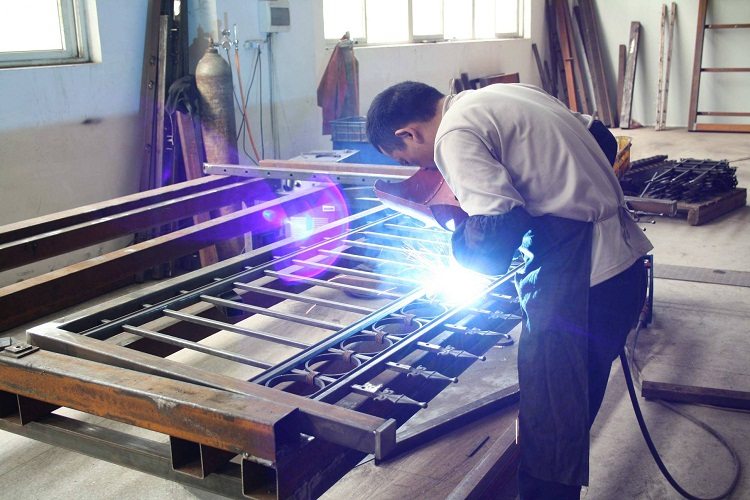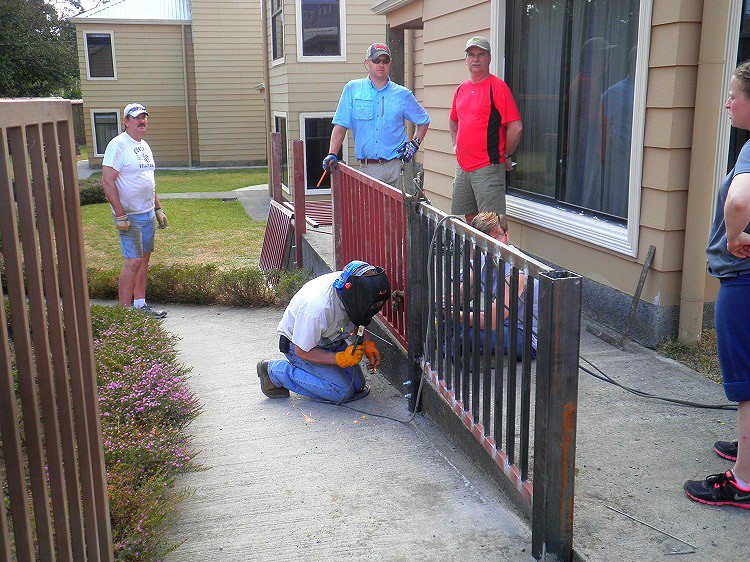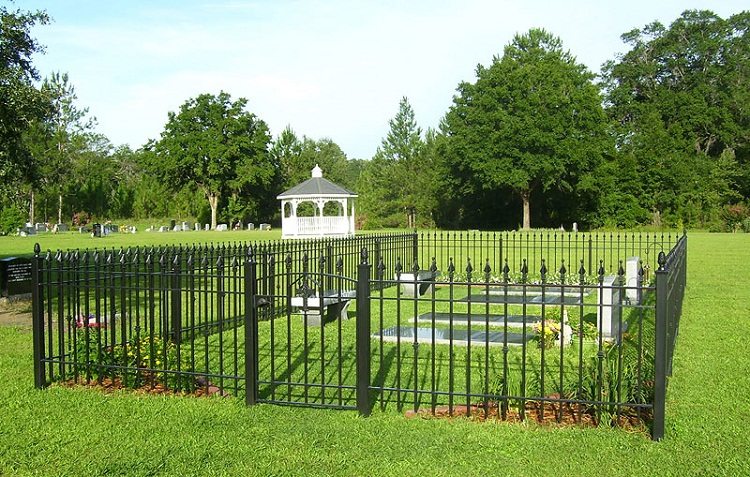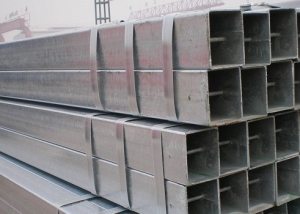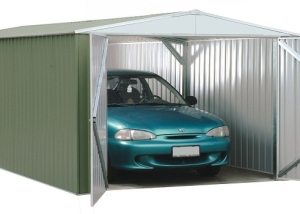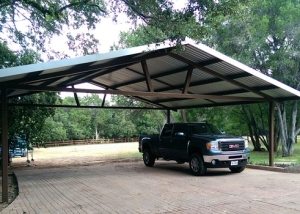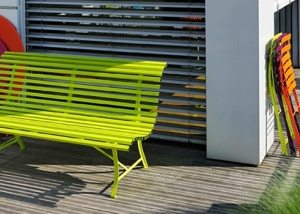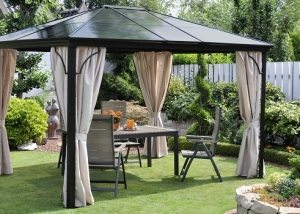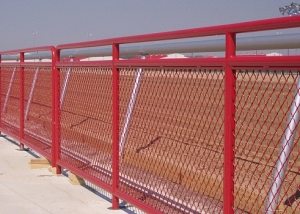Each good owner seeks to make his home beautiful, cozy and secure. The arrangement of the interior is only the initial stage, and the work itself ends in the yard. At the same time, not the last role is assigned to the fence, which can not only protect residents and property from illegal encroachments, but also decorate the entire household plot. When financial opportunities are limited, the best solution is to build a fence from a profile pipe with your own hands.
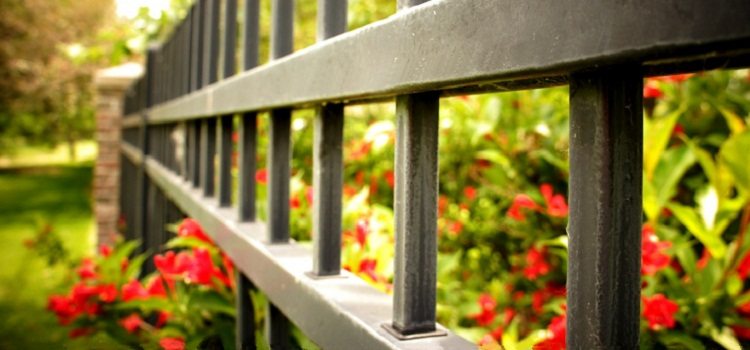
Profile steel pipes are often used for the manufacture of fences, as they are durable and have a long service life.
Content
The use of professional pipes as a material for fencing
A profile pipe is a product with a cross-section other than round. The most widespread was square, rectangular and oval pipe hire. This is due to the fact that the configuration features give such a product higher strength with the same wall thickness, if we compare it with a round pipe.
The range of profile pipes for the fence is very extensive. In a private compound are usually used:
- thin-walled products. Metal professional tubes of 25 × 25 mm cross section fall into this category, the wall thickness of which varies in the range of a millimeter. They are most often used to fill fences;
- medium sized samples. This includes products with sections up to 100 × 100 millimeters and with wall thicknesses up to 4 mm. They are used, as a rule, as supporting pillars of a metal fence from a profile pipe.
Good to know! Large-sized professional pipes with cross sections of the order of 200 × 200 millimeters and with a wall thickness of up to 8 millimeters for creating fences were not widely used. Basically, they are used as frame elements for prefabricated buildings. In addition, the bases for large machines are produced from them.
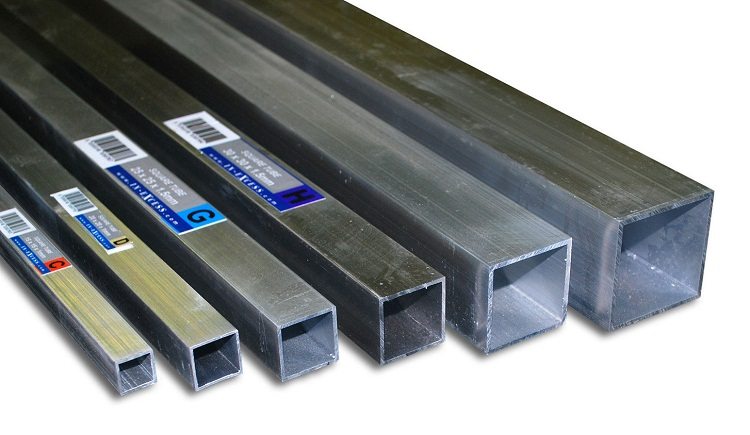
For the manufacture of fencing, pipes of different sizes are taken - large for the base, and small - for parts that do not carry loads
Most often, a fence from a profile pipe is created on the basis of products with a section of 40 × 40 or 50 × 50 millimeters with walls about 3 millimeters thick.
Advantages and disadvantages
Various technologies are used to produce such structures. Usually, owners of suburban cottages prefer welded fences from a profile pipe, which are assembled on a modular basis.
Regardless of the type, the following advantages are inherent in fencing of this type:
- strength and durability. If the foundation was designed correctly, and the anti-corrosion coating is updated in a timely manner, the fence from the profile pipe will last for more than a dozen years without the slightest signs of wear;
- the ability to install in flight almost any size. Performing procedures for measuring and adjusting the geometry of the workpieces to the required values, as a rule, does not cause difficulties;
- the possibility of combining materials. For example, a fence from a profile pipe can be installed on brick supports or supplemented with a sheeting with a profiled sheet.
The fact that the fence is transparent can be evaluated from two points of view.On the one hand, everything that happens behind the hedge is visible, and on the other, plants growing on the border of the site are not obscured. In order to protect your yard from prying eyes, you can sheathe the fence from the inside with profiled sheet or translucent plastic.
Another drawback of the fence from the professional pipe is the vulnerability of the compound from the wind. After all, the structure was constructed from rails located at a certain distance from each other.
Welded Fence Making
A fence of this type is less expensive to install and more reliable than a sectional or modular one. The only difficulty is that you need a welding machine and the skills to work with it. If you have all this, you can begin to manufacture the fence from the profile pipe. The sequence of steps is as follows:
- align workpieces carefully. This operation is required, as the factory rental may have deviations from the longitudinal axis;
- the next stage is the cutting of workpieces with subsequent trimming;
- In parallel with this, create a drawing of the fence. Sketches of fences created from shaped pipes can be searched on the web or drawn independently;
- Next, make the frames of the sections intended for installation around the perimeter of the site. This is done by welding pipes;
- then weld the filling pipe to the frame, and then the decorative elements.
Factory-made sectional constructions
As an alternative to welding a fence from a profile pipe, it is mounted directly on the precast section of prefabricated elements. In most cases, sectional fences are assembled by specialized installation teams.
There are many advantages to this approach. The main ones include:
- variety of designs. The extensive product catalog contains products of varying degrees of complexity;
- ease of installation. As a rule, welding is not used for the assembly of sectional fences: individual segments are connected using clamps.
Good to know! The technology implemented at the plants provides for the protective treatment of the modules, which provides high resistance to being in a humid environment.
Fence installation
Buying industrial modules or making sections is only half the battle. In order for the fence to serve for a long time, such products must still be installed with high quality.
This should be done as follows:
- In accordance with the size of the sections, outline the places where the support posts will be located. Make holes in the soil with the following requirements: their diameter should be 100 millimeters higher than the cross-section of the support; the depth in loose soil is 1.5 meters, and in dense soil 1 meter is enough.
- Having fallen asleep about 30 centimeters of rubble, ram it.
- Install the pillar. As such, you can use a thicker profile pipe for the fence. After this, pour a little more gravel into the hole, and then fill it with cement mortar. Fixing the support must be done with stretch marks.
- After hardening the solution, install a fence section between adjacent supports and weld to them. The last operation needs to be done only after preliminary alignment of the sections by level. Often, the design of the fence allows you to use not welding, but special fasteners.
- Welding decorative elements to the grate is allowed after the installation of the section.
- At the final stage, degrease the metal and paint all the pipes. So you protect the metal fence from corrosion.
Materials and Tools
The amount of material required is calculated according to the drawing. It should be borne in mind that the waste will take about 10-15%.
The list of materials looks like this:
- pipes for vertical rungs.The optimum diameter is 10 mm;
- pipes for supports. Their cross section should be at least 5 cm;
- pipes for mounting horizontal crossbars with a diameter of 30 ... 50 mm;
- cement, sand, gravel;
- materials for reliable fastening of gates;
- If you plan to attach sections of corrugated board to the frame welded from pipes, add it to the list of materials.
Also, you can not do without the following tools:
- locksmith keys;
- shovels or drill;
- drills;
- grinders;
- welding machine.
Fencing on a grave from a profile pipe - an aesthetic and reliable design
This decorative structure is designed to complete the architectural design of the memorial. The purpose of erecting such fences from a profile pipe is the territorial separation of the grave from nearby burials and the visual union of the scattered details of the tombstone in one composition. Commercial organizations offer more than a dozen solutions of memorial designs. However, fencing from the profile pipe belongs to the palm in this mournful business.
The fact that there are many options for decorative and structural solutions is due to the wide range of existing standard sizes of profile pipe. In general, the fence on the grave can be divided into the following types:
- products combining different sizes of profile pipes for racks, interior decor and for the frame;
- the supporting columns and the frame are made of a profile pipe in combination with a square bar, corner and strip for patterns.
- Enclosing structures to the grave of profile pipe, complemented by forging elements.
On a note! The first type is characterized by rectilinear ornamental geometry and monumentality. The second option is characterized by visual lightness, and the third is distinguished by a combination of openwork decor and frame power.
It is not difficult to independently make a design for framing a ritual tombstone. But here even a skilled owner can not do without drawing a fence to the grave from a profile pipe.
The final dimensions of the fence are determined by the architecture of the memorial site, but the dimensions 2 × 3 m are considered standard.
The development of the drawing must be carried out taking into account the key details of the fence:
- bearing pillars are made of square pipes with a cross section of 25 × 25, 30 × 30 or 40 × 40 millimeters;
- for frame sections, pipe rolling 20 × 20 or 25 × 25 millimeters is used;
- a gate (an alternative may be a chain with a sag);
- wireframe elements that play the role of patterns.
Poles are produced by cutting pipes into meter sections with subsequent welding of 100 × 100 millimeters of metal plates to their ends. In the process of arranging the fence of the grave, the columns are dug into the ground to a depth of 40 centimeters. It is not necessary to strengthen them by pouring concrete into holes. The rigid perimeter frame is already capable of withstanding significant mechanical loads.
The manufacture of sections includes the following steps:
- Pipe cutting into 2 meter sections for the lower and upper grave fence belts.
- For racks of the frame segments are cut in the range of 400 ... 500 millimeters.
- Welding parts in a single section. In this case, the intended pattern must be taken into account.
- Connection of frame components with support posts.
- Welding loops and hanging gates.
With the fence on the grave, ground and paint the structure. The traditional coating of the frame is black enamel, and the tips are decorated with silver and bronze. The best metal protection, according to professionals, is provided by the use of special blacksmith paints. They withstand significant changes in humidity and temperature.
